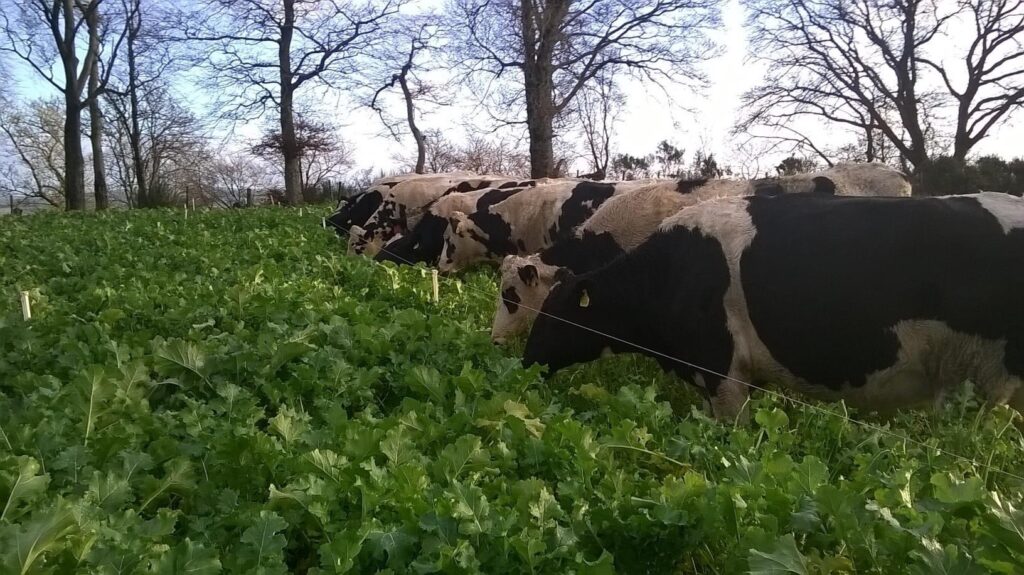Outwintering Heifers on Brassicas, Is Iodine Deficiency an Issue?
6 November 2023Rearing dairy heifers is one of the largest expenses of milk production so outwintering heifers can reduce costs due to less time spent housed, saving in feed and bedding. During outwintering, supplementation may be necessary due the variable amount of minerals available in the forages being fed.
Typically in the UK, dairy heifers will be outwintered on forages or brassicas such as kale, fodder beet or a grass grazing system, with baled grass silage as supplementary feed. One of the main challenges with outwintering heifers is mineral supplementation which can impact animal health and productivity. Copper, iodine and selenium are key trace elements in the diet, and if there is a deficiency in one or more of these, severe or minor, it can impact animal performance.
Signs of iodine deficiency
Iodine deficiency can be a particular issue when heifers are outwintered on brassicas due to the high levels of goitrogens. A deficiency in iodine impacts thyroid function which can influence the production of hormones, affecting:
- Growth – reduced daily liveweight gains.
- Fertility – irregular cycles, low conception rates, abortions and still births.
Identifying any trace element deficiencies in your cattle can be a good starting point to determine the level of supplementation required and your nutritionist should be able to advise you on this. There are a variety of diagnostic tests which can be completed for both the animal and feed sources. Blood testing can determine deficiencies in cattle while forages can also be analysed for deficiencies. Analysing the soil is a useful tool for determining the type and amount of fertiliser required, but is not an accurate tool to assess trace element deficiencies in grass or forages.
Methods of supplementation
It is important to consider supplementing with iodine when outwintering on brassicas due to the two to four-fold increase in requirement due to the lack of iodine available for uptake by the animal.
There are a variety of options that are available to use for supplementation:
- Boluses – daily release in the rumen, can last up to 6 months.
- Drenches – needs to be administered every 4 to 6 weeks.
- Mineralised concentrates – daily supply if heifers are fed every day.
- Powdered minerals – variable intakes if offered as free access.
- Buckets – variable intakes, reliance on every heifer using it.
For outwintering heifers, the most reliable method for iodine supplementation would be a bolus which can be administered before the heifers move onto their outwintering paddocks and the bolus will provide a constant supply for up to 6 months. Drenches may be an option if the heifers are being weighed or handled on a regular basis to allow the drench to be administered regularly, which can be as often as 4 to 6 weeks.
Remember that boluses and drenches will not cover the macro minerals like calcium or magnesium so you may need to consider an alternative way of ensuring that these are not deficient in the diet.
If you are outwintering heifers on brassicas this year, check that your method of mineral supplementation contains sufficient iodine to meet their requirements to ensure optimal growth rates and health over this period.
By Dr Cara Campbell
Sign up to the FAS newsletter
Receive updates on news, events and publications from Scotland’s Farm Advisory Service

